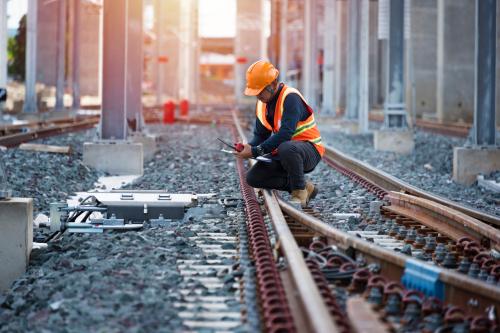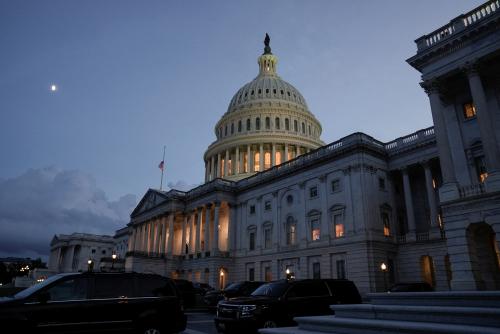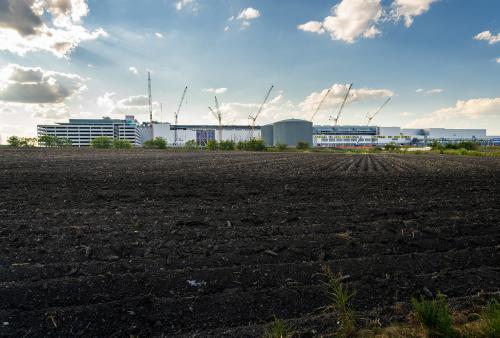The Infrastructure Investment and Jobs Act (IIJA), also known as the bipartisan infrastructure bill, will increase federal spending on infrastructure by about $550 billion over the next decade, nearly all through grants to state and local governments, which own much of the nation’s infrastructure. At our annual Municipal Finance Conference in July 2022, four experts addressed several questions about the IIJA: Ryan Berni, senior advisor to Mitch Landrieu, the infrastructure implementation coordinator in the White House; D.J. Gribbin, former special assistant to President Trump for infrastructure; Shoshana Lew, executive director of the Colorado Department of Transportation; and Eden Perry, head of the U.S. Public Finance Operation and S&P Global Ratings.
A video of the panel is posted here. Here are some highlights.
Some IIJA funds are allocated across states by formula. Others require state and local governments to apply for funding. How well is that process going?
SHOSHANA LEW: “There are an awful lot of federal discretionary programs now. Some of them are new; some of them are variants of ones that have been around for several years… [W]hat we are trying to do is figure out how to write a finite number of good applications… Our federal friends have a hard set of challenges on their plate delivering all of these new programs. I would applaud DOT [U. S. Department of Transportation] for trying to combine the sources where they can. They put out a single funding notice in one instance for three different programs, so that instead of having to apply three times, we could do it once. The more they can do that, the easier it is for people where we sit to actually avail ourselves of those programs. I think on the back end how they project manage those could be challenging if it’s not very organized because the dollars will [flow] through different operating administrations with different rules. Making sure that they’re as adherent to consolidation on the back end as they’ve been on the front end…would be important.”
RYAN BERNI: “We really feel like we’ve hit [the] ground running… We view this as a five- to seven-year endeavor, and in many instances the money will be spent 10 and 12 years out, given the way that things work. We have started to build a team at the White House to focus on project delivery, focus on setting up the right structures. Each state has appointed a state infrastructure coordinator at our direction, with one or two exceptions. And we’re working really hard on making sure that low-capacity communities have the resources needed to both plan for and apply for funding. The bill [has]… 375 programs, 125 of them are brand new.”
DJ GRIBBIN: “That bill is a hot mess. I think Ryan is being polite… Remember where this bill came from. This is like two handfuls of senators that got together, almost like got together over beers and threw a bunch of stuff that was on the shelf into a bill, sent it to the House. The House did nothing with it, passed it. And now we’ve got 125 new grant programs. We tried to do one [new] program, our Urban Partnership Agreement in the Bush administration and that was incredibly difficult. This bill has a competitive program for culverts. And I don’t know who the head of the culvert lobby is that got this in there, but that person should get a huge bonus. For those who don’t know what [a] culvert is, [it is] a pipe that goes underneath a road or a railroad to just channel water away from the infrastructure. There’s now a new federal competitive grant program for culverts so there’s [going to] be lots of programs, lots of money, lots of chaos.”
What effect will higher inflation and labor shortages have on state and local infrastructure spending?
EDEN PERRY: “What happens with inflation, supply-side disruptions, the difficulty finding workers for projects, the increased wages for workers? We’re expecting that states and local governments may be… focusing on smaller, more impactful projects, or even… stretching out the timing if possible… I think the concern is finding the workers… and paying their wages. I think that’s a huge issue right now.”
SHOSHANA LEW: “We are getting non-trivial pressure from parts of the industry to approve of cost overages without doing diligence on them. We’re not going to [do that]… [We need] to make sure that even in an environment with inflation, we get the best return on taxpayer investments.
Will the Infrastructure Investment and Jobs Act add to inflationary pressures?
RYAN BERNI: “The answer is no. And outside folks have said, ‘Yeah, sure, of course spending any bit of money right now may be inflationary.’ But the impact of this bill is positive on the inflation issue for a couple reasons. One is we are actually going to fix the supply chains that have created a lot of the situation that we have today in ports and rail and airports and railways, increased productive capacity of the economy, with a lot of what we have. The second thing is we’re… just not spending that much money in this current year. A lot of the money [is spent] in the out years.”
Will the flood of federal money diminish the role that public-private partnerships play in state and local infrastructure projects?
DJ GRIBBIN: “[Yes], I think that’s [going to] be crowded out in two ways. First of all, as everyone has mentioned, there’s more funding. it’s [a] tsunami of funding… So there’s less need to look for financing alternatives than you might have otherwise. And then secondly, crowding out in terms of time. I’m sure… DOTs, cities, the counties across America are getting their teams to focus on how do we apply for federal funding and grants, as opposed to how do we think of new innovative ways to involve the private sector in funding these infrastructures?… It’s a great tool to have in the toolbox. It can be useful, but it could be [limited in the] current environment, given the amount of cash that’s coming in and the need to hustle aggressively for the competitive grant programs… There is a common misperception that public-private partnerships will bring more funding into the infrastructure. [It] doesn’t bring more funding. It brings more financing tools so that states can accelerate these projects. At the end of the day, infrastructure funding comes from two sources, users and taxpayers, full stop.”
The Brookings Institution is financed through the support of a diverse array of foundations, corporations, governments, individuals, as well as an endowment. A list of donors can be found in our annual reports published online here. The findings, interpretations, and conclusions in this report are solely those of its author(s) and are not influenced by any donation.
The Brookings Institution is committed to quality, independence, and impact.
We are supported by a diverse array of funders. In line with our values and policies, each Brookings publication represents the sole views of its author(s).







Commentary
Four questions (and answers) about the Infrastructure Investment and Jobs Act
August 8, 2022